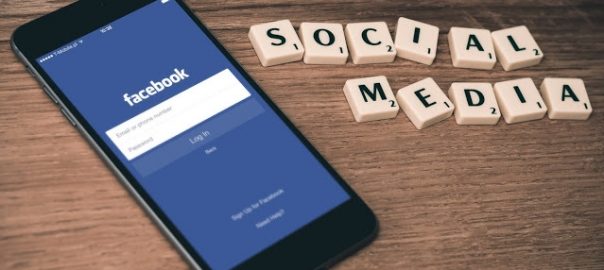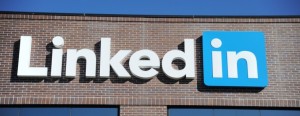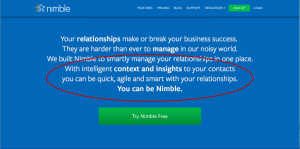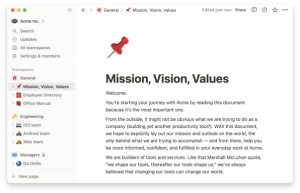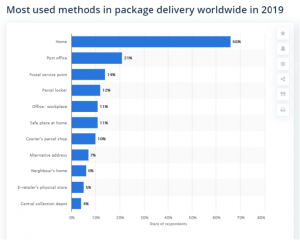
The internet is a massive part of our lives. We use the internet for all sorts of things?—?to socialise, learn, or entertain us. It is where many of us spend a lot of our time.
Because we are spending so much time online, the internet has become a powerful tool to communicate with customers and potential customers.
Promoting our business on the internet is digital marketing, and companies have so many opportunities to put their brands out there to attract customers.
Where do we start?
Read on to find out more.
Digital marketing utilises the internet and online-based digital technologies for marketing products, services, and brands. Businesses can connect with their target audience, where they spend a lot of their time?—?online.
Terms such as ‘online marketing’, ‘internet marketing’ or ‘web marketing’ are often used synonymously. However, digital marketing extends to non-internet channels to use numerous digital media to connect with customers.
Along with the internet, digital marketing includes apps, mobile devices, video games and other digital channels to reach consumers.
This article will focus on internet-based digital marketing tactics.
“Digital marketing is a blanket term for the targeted, measurable, and interactive marketing of goods or services using digital technologies in order to reach and convert leads into customers and preserve them. The main objective is to promote brands, shape preference and boost sales. “ (Todor, 2016).
A brief history of digital marketing
Nowadays, using digital marketing is crucial to almost for any business to compete.
But thirty years ago, this was not the case.
Now, a vast majority of companies has a website, social media presence or digital ad strategy. Consumers now expect it, often using digital tools such as website and social media to learn about brands’ products or services.
Technology advances changed how businesses used marketing in the 1990s, with growth in the internet’s popularity. The first banner ad appeared on a website in 1994.
Into the 2000s and 2010s, digital marketing became a part of consumers’ everyday lives as we spend more time online. Advancements in computers with laptops and then mobile devices with the iPhone meant more consumers were using digital devices for research their needs instead of visiting physical shops.
Advancements in Customer Relationship Management (CRM) and the use of social media platforms such as Facebook and Twitter gave business availability to vast amounts of customer data. They allowed businesses to communicate directly with their target customers.
“Rapid growth of Web-based platforms that facilitate online social behaviour has significantly modified the nature of human activities, habitats, and interactions.” (Tiago, & Veríssimo, 2014)
Inbound marketing
Digital marketing often uses inbound marketing tactics to attract and engage customers online.
Inbound marketing has a customer-centric approach, using pull tactics to attract target customers through stimulating, engaging, and helpful content.
On the other hand, Outbound marketing uses push tactics to put marketing directly in front of consumers, regardless of whether they find it relevant.
“Inbound marketing means to promote a business through blogs, podcasts, video, eBooks, eNewsletters, whitepapers, SEO, physical products, social media marketing, and other methods of content marketing which serve to interest customers through the different stages of the purchase funnel.” (Todor, 2016)
TV adverting or catalogues in your mailbox are examples of push marketing.
A useful tool for inbound marketing is the business website, to benefit from keywords that potential customers are searching.
Different content is suited to varying stages of the buyer’s journey using the website content. Some buyers are ready to purchase, and some want to learn. Product information will help purchasers prepare to buy, and informative blog posts will be relevant to other customers early in the buying decision-making process.
“Marketing managers who fail to utilize the importance of the Internet in their business marketing strategy will be at a disadvantage because the Internet is changing the brand, pricing, distribution and promotion strategy.” (Bala, & Verma, 2018)
The benefits of digital marketing
There are several benefits to using digital marketing, such as its effectiveness for increasing brand awareness and generating customer leads.
Here are six other benefits to using digital marketing.
“One of advantages of online marketing is related with its enabling effect especially on small businesses since internet can extend market reach and operational efficiency of small and medium enterprises (SMEs)” (Todor, 2016)
Accessible
There are very few barriers to entry for using digital marketing. A computer or mobile phone and an internet connection are all you need to start. Social media accounts are free, websites are low cost, and there are plenty of tools to create marketing content for free little cost.
For small businesses, digital marketing allows them to have a voice sometimes larger online than more prominent players in the industry. For example, blogging with high quality and informational content filled with keywords that customers search for, can help you outrank bigger competitors in search results.
“Digital marketing is able to create offers and programs that can be customized or personalized based on the profiles or consumer behaviour and their preferences.” (Todor, 2016)

Targeted
Digital marketing has the enormous advantages of being able to target very large or particular audiences. You could set an ad up to target every user across the planet to see it; or at the other end of the scale, you could have a particular local audience.
With an advertisement on TV or a billboard, you have limited control over who sees the promotion. This not targeted marketing, meaning many people will see it that are uninterested in your business.
Create custom audiences of your ideal customers (or, buyer personas), to target them with specific ads across social media platforms, search engine advertising and other ads.
Characteristics of customers than can be used to create audiences are age, gender, location, interests, and even some behaviours.
“Compared to traditional mass media marketing, digital marketing has much lower cost and in many cases, websites can generate traffic even for free.” (Todor, 2016)
Cost-effective
Many traditional marketing forms can be quite costly, such as TV or radio ads, billboards, or print advertising.
However, digital marketing can be very cheap in comparison. Some businesses put thousands of dollars a month on Facebook or Google ads. However, for many companies, spending less than $ 100 a month will still have an excellent online marketing presence.
Native content on social media is free, blogging is free, and you can do a pretty good job of your SEO for your free, with the right knowledge.
“One important aspect is the return on investment (ROI) from any digital marketing campaign. To understand what the ROI is, we need to understand what the goals or aims of the company are, what they wish to get from a digital marketing campaign and then measure these goals.” (Todor, 2016)
Easily measurable
A significant benefit of most digital marketing activities measures the ROI (return on investment). Digital technologies such as website and social media analytics make it far easier to collect and analyse data than traditional marketing.
Data is available at the click of a button. This data includes the number of people who visited your website, how many pages they visited, how long they spent, and what directed these people to your website.
Common performance indicators (KPIs) include:
- General Performance such as traffic, leads, reach.
- Channel Based such as website, blog, social networks, search engines.
- Source-based performance, such as direct traffic, organic search, PPC, and email.
- Campaign-based performance such as lead generation, click-through and conversion rates.
Understanding and analysing and understanding these metrics allows a firm to identify trends and patterns in customer behaviours, to learn how customers research and consume brands online.
Your firm can then make more informed decisions about your marketing strategy and Optimise it by prioritising marketing channels that are achieving better results.
Adaptable
Many of the marketing materials online can be changed easily, meaning a firm can continuously pivot with its strategy. For example, they can update website content, social media content deleted, or create new Google or Facebook ads.
You can also control where you choose to spend your money because you can track previous campaigns and analyse what has worked well and what has not.
Digital footprint
Most of your online presence will become permanently available. Potential customers can consume the information over an extended period.
Unlike TV advertising or other marketing forms with a limited timeframe, your social media content and website content will be available until you delete it. Even then, that information may be available elsewhere on other websites.
With the vast number of social media platforms and other opportunities to share all types of marketing content online, your digital footprint can become very large.
Digital marketing strategy
When it comes to planning your digital marketing strategy, start by identifying and defining your broader business goals. It is essential to have a clear picture of these goals as you create your marketing strategy to support and reach these goals.
Use a combination of paid and free digital marketing practices to achieve the best results. A Facebook page is excellent, but to maximise its effectiveness, paid advertising is a must. At the core of your strategy should be creating quality online content to attract and convert customers.
The next section will explore the following components of digital marketing:
- Website
- Search engine optimisation (SEO)
- Search engine marketing
- Google My Business
- Content Marketing
- Social media marketing
- Marketing automation
- Pay Per Click (PPC)
- Affiliate marketing
- Email marketing
- Online PR
- Marketing and sales funnels
1. Website
A company’s website should be a centrepiece for their digital marketing strategy. It is a powerful tool by itself, but the real strength of a website for marketing is using it along with a variety of other digital marketing tools and techniques. Ultimately, we want to drive traffic to our website from other sources. Our website is where we usually convert prospects into customers.
The website should represent your brand as best as possible. The look and content should be eye-catching and memorable. The website’s performance is also essential?—?it should be easy to navigate, fast-loading, mobile-friendly, and easy to use.
“Search Engine Optimization or SEO is essentially tweaking your website so that it comes up naturally or organically for search results in Google, Yahoo Bing or any other search engine.” (Bala & Verma, 2018)
2. Search Engine Optimisation
Instead of paying for advertising to rank in search engine results (SERP), search engine optimisation (SEO) helps you rank higher in the results organically (free). SEO optimises content on your website, including blog articles and infographics.
A key component of SEO is conducting keyword research to create a list of high-performing keywords relating to your products or services. SEO takes an investment of time and effort instead of direct advertising spend. It can be complicated to do yourself, and some of the practices might need implementation from your website builder.
Types of SEO include
- On-page SEO is content on the page, such as using keywords.
- Off-page SEO is practices such as link building to build your authority.
- Technical SEO tweaks the back end of your website’s performance, such as increasing your website’s loading speed (Google likes fast websites)
“SEM also includes Display Advertising, Search Retargeting & Site Remarketing, Mobile Marketing and Paid Social Advertising.” (Bala, & Verma, 2018)
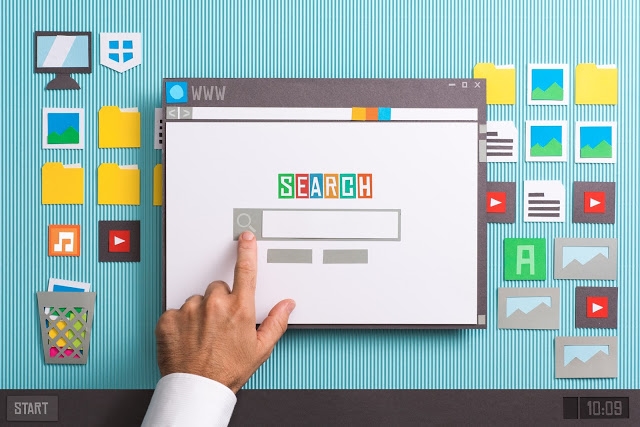
3. Search Engine Marketing
Search engine marketing (SEM) drives your website traffic through search engines such as Google, Bing, and Yahoo. The traffic is typically through paid ads, so people also refer to it paid search advertising.
When a user searches for a topic through a search engine, two sets of results come up. The first set of products are the organic ones, as discussed above in SEO; and the second set of results paid ads.
Search engine marketing is a popular strategy as it targets potential customers who are already searching for a product or service like yours.
4. Google My Business
Google provides a free tool to business owners called My Business to improve their online search presence.
Once a business creates a Google My Business listing, it generates a Google Maps location which synchronises with Google Search to enhance location-based searchability.
Like social media accounts, businesses can add important information, such as their location, contact information, photos, and products/services. Customers can even leave reviews and their photos. Businesses should provide as much information as possible to help their Google ranking for relevant search queries.
The more Google knows, the easier it is for them to show it to the right people. Therefore, a completed business profile will help with SEO and Google ads can also be set up through the account.
5. Content Marketing
Creating and promoting marketing any marketing content online is called content marketing. Content marketing generates brand awareness, increases social media following, increases website traffic, and ultimately generates customer leads.
The content should not try to sell; instead, be entertaining, engaging, and educational content. Businesses try to capture the attention of their target customers. It is often published on the company website, promoting content through social media, email marketing, SEO, and paid ads.
Types of marketing content include White papers, e-books, case studies, how-to guides, glossaries, industry news, video, images and banners, podcasts, webinars, blogging, online courses, and infographics.
Some of the more popular content marketing tools are:
Blogging generates organic search traffic to your business website by regularly writing articles in your niche with informative content and demonstrating your industry expertise. The copy in your blog should be packed full of relevant keywords for SEO.
“Blogs as a tool for digital marketing have successfully created an impact for increasing sales revenue, especially for products where customers can read reviews and write comments about personal experiences.” (Bala, & Verma, 2018)
Whitepapers and eBooks are long-form content, and similarly to blogging, the content aims to educate readers. They are also a lead-magnets (or gated content), meaning you collect the contact details of those who download it. Typically, at least an email is required so that the marketer can send the consumer the piece of content.
The idea is that you are generating qualified leads, as the people downloading it are interested in what you have to say, so could be potential customers.
Infographics also educate people, but in the form of visual content. Infographics often use charts, images, numbers, and minimal text, to communicate information quickly and clearly and give an easy-to-understand overview of a topic.
Video Marketing, as you would expect, uses video content as a marketing tool. The use of video online is widespread, and YouTube has become the second most popular search engine. People use it to find information about all sorts of things, including product reviews, to inform them during their buying decision process.
Many other popular social media platforms encourage video content, such as Facebook, TikTok, Snapchat, Instagram, and even LinkedIn.
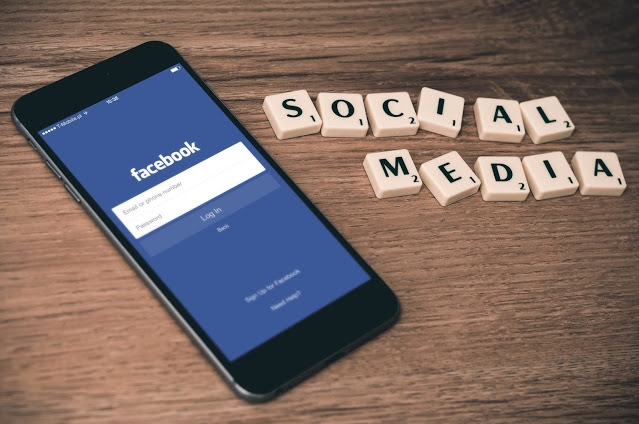
6. Social Media Marketing
Social media marketing’s primary goal is to increase brand awareness and establish trust with the target audience to generate customer leads and direct website traffic.
Popular social media platforms include:
Most social media platforms allow you to run ads on their site, building awareness when you have a small audience and reach.
Each social media platform has a point of difference, and its main user-base depends on that.
Social selling is the use of social media for sales and marketing. Influencer marketing is a popular marketing tool for businesses on social media.
7. Marketing Automation
Software is available such as HubSpot and Marketo to connect social media channels in one place to schedule and automate content across platforms to streamline the process.
However, be careful not to create generic content that you use across every platform. Each network has a unique community and different ‘types’ of content and conversation style that works better.
These software platforms also automate your basic marketing operations and repetitive tasks such as
- Email newsletters
- CRM
- Social media post scheduling
- Lead-nurturing
- Campaign tracking and reporting
8. Pay Per Click (PPC)
Marketing that charges a firm for every click on a paid ad is called pay per click (PPC) advertising.
PPC is the system used in search engine marketing such as Google, advertisers bidding on key search terms used by customers to achieve a top position in search results.
Several social media platforms also use PPC such as YouTube, LinkedIn, Twitter, Pinterest, and Facebook.
Keywords in search queries trigger ads on search engines. On social media, ads target segmented audiences based on their demographic characteristics (such as age or gender) or target locations, interests, or behaviours.
Ads use various display formats?—?text, image, banner, rich-media, interactive or video ads. Firms customise ads to the targeted audience and their needs/interests/desires.
To blend in with a website’s feel, Marketers can also feature paid ads alongside non-paid content on websites such as blogs or other media.
9. Affiliate Marketing
Marketers can earn a commission marketing other peoples’ or company’s products online.
Affiliate marketing uses endorsement to earn promoters (the affiliate) money when internet users act on their marketing through clicks or sales. A common tactic for affiliate marketers is Posting affiliate links to their social media accounts or blog articles.
Often an affiliate marketing network manages the relationship between merchant and affiliate. Amazon has one of the largest affiliate networks globally, and the YouTube Partner Program allows users to host video ads.
“Affiliate Marketing is especially useful for start-ups, as it will bring in more traffic to their business through high-traffic sites.” (Bala, & Verma, 2018)
10. Email Marketing
Using email to promote content, events, and direct people to your website is email marketing.
The recipients of the emails should be previous customers and other people on your database who have shown an interest in your brand or what you have to say. Content marketing and sales funnels generate these leads, the objective to nurture them into customers.
On the other hand, Spam is sending emails to random people who did not permit you to contact them and is illegal.
Types of emails include:
- Newsletters to inform subscribers of the blog or social media content they might find valuable
- Follow-up emails to potential purchasers who left items in their cart without purchasing them
- Welcome emails for new subscribers
- Advertising limited time offers or discounts.
- Special promotions to loyalty program members
“With effective email marketing software, you can maintain email lists that are segregated based on several factors, including customers likes and dislikes, and spending habits.” (Bala, & Verma, 2018
11. Marketing and Sales Funnels
Marketing and sales funnels are a vital tool for a digital marketing strategy.
An example of a marketing funnel is blog posts generating leads for a free eBook. The eBook might be “10 tips to growing bigger potatoes” and a blog post to direct people to the eBook called “Best time of year to plant potatoes.”
You might post a link on your Facebook and Instagram accounts with a picture of potatoes.
Once somebody downloads the eBook, you have their email address, because that was a part of the process to download the eBook.
Then, email these people when you have a special deal on your potato seeds.
12. Online Public Relations
Like traditional public relations (PR), online PR is about securing earned coverage for your brand. It is much more challenging to measure the success of PR than other online marketing methods.
Still, businesses should not underestimate the lack of analytics for measuring a positive news article’s impact.
Examples of online PR activities are:
- Engaging in negative reviews can help humanise your brand as it shows that you care about their experience.
- Press releases on your website or social media.
- Share content about causes that connect people.
- Engage with comments on social media content or your blog.
- Email outreach to reporters and media organisations with pitches for news articles.
Thank you for reading.
I hope you enjoyed the content on digital marketing.
We first explored a brief history and talked about digital marketing’s significance for businesses now in 2021.
I talked about the benefits of using digital tools in a marketing strategy, and then gave 12 examples of different ways to use digital marketing to promote our businesses.
Hopefully, if you’re a business owner or budding marketer, there has been some useful information to apply these methods yourself.
Digital & Social Articles on Business 2 Community
(137)
Report Post